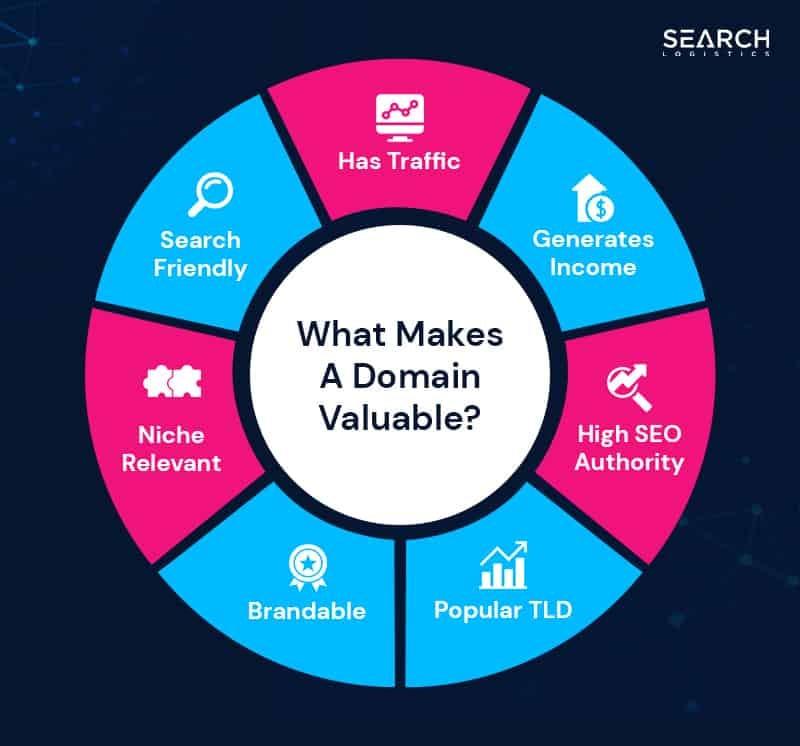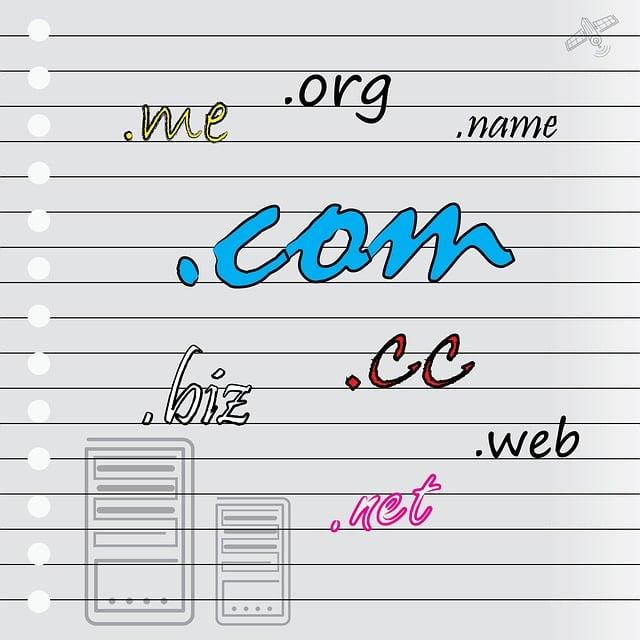Table of Contents
- Understanding the Domain Flipping Market Trends
- Essential Strategies for Successfully Flipping Domains
- Evaluating Domain Value: Criteria and Best Practices
- The Role of SEO in Enhancing Domain Resale Potential
- Maximizing Profit: Top Platforms for Selling Domains
- Q&A
- The Conclusion
Understanding the Domain Flipping Market Trends
In recent years, the domain flipping market has witnessed dynamic shifts, influenced by factors like technological advancements and changing consumer behavior. A significant trend is the increasing value attributed to short, memorable domain names. Buyers are now seeking domains that either reflect their brand ethos or enhance their SEO strategies. This has driven up demand for premium domains, resulting in higher sale prices for those who understand the nuances of the market.
Another important development is the rise of niche-specific domains. As businesses increasingly strive to carve out unique identities online, having a domain that ties directly to their products or services has become vital. This trend manifests in various sectors, especially in e-commerce and digital services, where a well-chosen domain can dramatically improve visibility and customer recall. Consequently, sellers are focusing on acquiring domains that can cater to specific industries, enhancing their potential profit margins.
Moreover, with the advent of advanced analytics tools, flippers are now equipped to assess market trends more accurately. By leveraging insights into current keyword popularity and consumer preferences, they can identify lucrative opportunities, Iike:
- Seasonal domains that capitalize on holiday shopping trends.
- Local business domains that appeal to geographic-targeted marketing.
- Trending tech domains related to emerging technologies like AI and blockchain.
This analytical approach not only determines the pricing strategies but also aids in effective marketing plans for the resale of purchased domains.


Essential Strategies for Successfully Flipping Domains
Successfully flipping domains requires a keen understanding of market trends, strategic planning, and a bit of creativity. First and foremost, effective research is crucial. Look for domain names that are simple, memorable, and relevant to emerging industries or popular trends. Tools like Google Trends and domain name generators can help identify these valuable opportunities. Additionally, consider using keyword analysis tools to find terms that have high search volume but low competition, allowing for higher resale potential.
Once you’ve identified potential domain names, the next step is to enhance their value. This can include optimizing the domains for SEO, creating a simple website, or even building up social media profiles linked to the domains. These actions can increase the perceived value of a domain, making it more appealing to potential buyers. Here are some critical strategies to implement:
- Invest in quality: Prefer short, brandable domains over longer ones.
- Check historical data: Utilize tools like Wayback Machine to research previous traffic and performance.
- Identify target buyers: Research potential end-users who would find the domain valuable.
Pricing your domain wisely is another essential aspect of flipping. To determine an appropriate price, consider factors like market rates for similar domains, demand, and your investment costs. A good approach is to start at a higher price to gauge interest and make adjustments based on feedback. Below is a simple table illustrating common pricing strategies based on domain types:
| Domain Type | Average Price Range |
|---|---|
| Brandable Domains | $1,000 – $10,000 |
| Keyword-Rich Domains | $500 – $5,000 |
| Premium Domains | $10,000+ |


Evaluating Domain Value: Criteria and Best Practices
When delving into the domain flipping world, understanding the value of a domain name is crucial for making informed decisions. Several criteria can influence this value, such as keyword relevance, which assesses how well the domain aligns with popular search terms in your niche. Names that contain high-traffic keywords can command higher prices due to their potential for enhancing search engine rankings. Moreover, the length and memorability of the domain are significant factors; shorter, catchy names are easier for users to recall, leading to more direct traffic and engagement.
Another key aspect involves the domain’s history. A clean, spam-free history can boost the perceived value of a domain. Utilizing tools like the Wayback Machine or various SEO software can help you evaluate its past performance. Domain extensions also play a role; while .com domains are often seen as the gold standard, niche-specific extensions (like .io or .tech) may carry their own value depending on current market trends and audience preferences. When analyzing a domain, it’s essential to consider other elements such as:
- Brandability: Is the domain name unique enough to stand out?
- Market demand: Is there a growing interest in the niche the domain serves?
- Comparable sales: What have similar domains sold for recently?
it’s vital to keep an eye on the SEO metrics. Factors like Domain Authority (DA), Page Authority (PA), and back-link profiles can provide insight into how well the domain can perform in search engines. A table can summarize these metrics effectively:
| Criteria | Importance | Evaluation Tool |
|---|---|---|
| Keyword Relevance | High | Google Keyword Planner |
| Domain History | Medium | Wayback Machine |
| SEO Metrics (DA, PA) | High | Moz, Ahrefs |
Understanding these criteria allows domain flippers to not only make more informed purchasing decisions but also effectively market their properties to potential buyers. By following these best practices, one can cultivate a profitable domain portfolio that stands the test of time.


The Role of SEO in Enhancing Domain Resale Potential
In the competitive world of domain flipping, SEO serves as a crucial element in determining the resale potential of any domain. A well-optimized domain not only attracts buyers but also commands a higher price in the marketplace. This is because search engines favor domains that exhibit strong SEO characteristics, such as relevant keywords, high-quality backlinks, and a clear brand identity. Buyers are more likely to invest in domains that have been optimized, as they see the potential for increased traffic and better visibility on search engines.
When evaluating the resale potential, consider the following SEO factors that can significantly enhance a domain’s attractiveness:
- Keyword Relevance: Domains containing highly searched keywords related to a specific niche tend to have higher demand.
- Backlink Quality: Domains with existing backlinks from reputable sites are more valuable, as they indicate credibility and trustworthiness.
- Domain Age: Older domains often enjoy better SEO standings and can provide a sense of established authority.
Furthermore, it’s essential to understand the buyer’s perspective in the domain flipping market. Many investors seek domains that not only have SEO potential but also a straightforward path to monetization. This could involve:
| Monetization Strategy | SEO Benefit |
|---|---|
| Content Creation | Increases organic traffic through valuable content. |
| Affiliate Marketing | Leverages existing traffic for higher conversion rates. |
| Advertising Revenue | Generates income from high-traffic domains. |
By enhancing a domain’s SEO profile and considering the various monetization options available, sellers can effectively increase its appeal to potential buyers, thereby driving up the domain’s resale value.


Maximizing Profit: Top Platforms for Selling Domains
Venturing into the realm of domain flipping requires not just a keen eye for potential, but also the right platforms to maximize your profits. Various marketplaces cater to different types of sellers, making it essential to choose one that aligns with your goals. Here are some of the leading platforms suited for this business:
- GoDaddy Auctions: Renowned for its vast user base, GoDaddy provides an extensive platform for buying and selling domains. The auction-style approach allows sellers to gain maximum visibility and competitive offers.
- Sedo: Focused on domain trading, Sedo offers a user-friendly interface and great exposure to potential buyers worldwide. With options for valuation, Sedo ensures sellers can price their domains effectively.
- Flippa: Ideal for those looking to sell complete websites along with their domains, Flippa boasts a vibrant marketplace and various listing options to attract investors.
When evaluating each platform, consider the associated fees and audience demographics, which can significantly influence your profit margin. Below is a quick comparison table of some popular platforms:
| Platform | Type | Fee Structure | Best For |
|---|---|---|---|
| GoDaddy Auctions | Auction | Variable fees based on sale | High visibility and volume |
| Sedo | Marketplace | 10% commission | International reach |
| Flippa | Auction/Marketplace | Variable fees; upgrades available | Full website sales |
Arming yourself with knowledge about these platforms not only aids in effective selling but also enables strategic investment in promising domains. By leveraging the right marketplace, you can substantially increase your revenue potential and evolve your domain flipping endeavors into a profitable venture.

